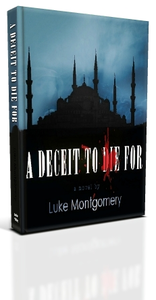DALLAS December 7, 2012 – Seventy-one years ago today, America’s Pacific fleet was attacked by the Japanese Imperial Army at Pearl Harbor. Described by FDR as the “day of infamy,” this marked the beginning of a brutal chapter in the history of not only America, but all of the nations plunged into the Pacific blood bath. December 7th is also the release date of a new book by Dr. Mary Jane Hodges Vance entitled Mary of the Angels, the saga of a Spanish family and biography of her mother Maria de los Angeles Josefa Gabina Gamero y Cucullu.
The story opens in Spain. It is 1836 and the country is being ripped apart by civil war between Loyalists and Rebels. Don José Maria Gamero makes a critical decision to take his wife and only son José M. Gamero away from the violence of his homeland and start a new life in the Philippines. It was, of course, impossible for him to know that his flight from war in Spain would put his grandchildren and great grandchildren in the middle of the Pacific theater of WWII almost a century later.
José M. Gamero grows up in the Philippines and eventually marries a beautiful Spanish girl, the first of four marriages which result in twenty children. The rigors of childbirth and difficult conditions of life in the 19th century provide ample room for the Angel of Death to perform his duties. The family's strong Catholic faith is passed down through the generations and helps them makes sense of these regular visits from the Angel of Death.
Maria de los Angeles chronicles the family’s adventures and misfortunes, providing unique insight into the lives of Spanish colonists in the Philippines and the hazards of living in a foreign land. It is a story of faith, which also meant excommunication when one of the Gamero daughters falls for a Russian Jew. Lorenzo is disowned for being seduced by and marrying a native girl. Salud falls for a predatory German.
It is the journey of a family over four generations. The tale of how a colonial Spanish family became embittered towards America due to the Spanish American War and the annexation of the Philippines, but later fell in love with this same country when rescued from Japanese occupation.
The story relates how the Angel of Death visited the islands in the flu epidemic of 1918 and the family’s self-imposed quarantine. With the death of Maria's father Don José Gamero when she was only three, the upper middle-class family gradually begins to suffer economically. All of the children contribute to the family coffers as they grew old enough to work.
Maria de los Angeles gives the reader anecdotal glimpses of a world of mestizos, nationalism and religious fervor. She meets a young gringo from Quinlan Texas, an entrepreneur named Jesse Hodges, and even though he is sixteen years her senior, he eventually succeeds in capturing her heart.
Maria chronicles the ups and downs of life, its reversals, its joys and its sorrows, all against a backdrop of the Church, which plays such a central role in their lives.
The Great Depression and a series of failed ventures and broken promises put the family in dire financial straits, struggling just to survive, but this is exactly the skill set they will need to endure the horror of the Japanese occupation lurking just around the corner.
With tensions in the Pacific rising, Jesse and Mary Hodges allow their oldest son Bobby to join the Navy. His letter of acceptance arrives six weeks before the Japanese invasion. On December 7, 1941, Bobby bids farewell to his family and goes with a friend to begin serving in the Navy. Later they receive word that Pearl Harbor has been bombed. The invasion of the Philippines begins on December 8th and except for a Christmas letter from Bobby received on December 19th, they never hear from their son again.
Maria's poignant first-hand retelling of the occupation is a sobering reminder to us all that forces of evil haunt this world. The desperation and fear that swept the island when American forces abandoned it to the Japanese is palpable. It is a touching personal narrative about what it meant to live under an occupying army.
Everyone was constantly subject to search, beating, seizure of property and nearly arbitrary capital punishment for the smallest infractions. One of their neighbors, a neutral Swiss citizen, was tied to a telephone pole, bayoneted and left to bleed to death because a shortwave radio was found in his home. All of the Americans in the area, including her husband, were interred at Santo Thomas, where there were thirteen toilets and twelve showers for 1200 men. This number would eventually swell to 5,000.
Walter D. Edmunds characterized the Japanese invasion of the Philippines, saying, "In the Philippines the personnel of our armed forces almost without exception failed to assess accurately the weight, speed, and efficiency of the Japanese Air Force." The result was a humanitarian disaster, crushing defeat of the unprepared American forces and the infamous Bataan Death March.
Mary of the Angels is a tale of survival, a steady stream of reverses and the indomitable human spirit in the face of hardship. The story is moving reminder that the difference between what someone will eat and what they will not eat is about 72 hours. Mealworms in the flour are viewed as a protein supplement. Iguana is added to the grill list. Mary Jane, Maria's daughter, stands in line at the slaughterhouse every day for the offal the Japanese don’t want - intestines, brains, tongue, congealed blood and other organs.
Life is fragile, fleeting, prone to fly away like a butterfly. Women watch as the Japanese shoot their husbands and sons in front of the trenches that will become their graves and were dug with their own hands.
Hunger eventually trumps fear as people loot and rob just to stay alive. The campaign of terror is everywhere around them. Comfort women are forced to provide sexual favors to Japanese soldiers on the street in broad daylight. Those who become pregnant have their bellies ripped open and are allowed to die.
It is no wonder that prayer pervades the entire book. Prayers offered for the strength to survive the Japanese occupation, prayers that they will survive the liberation, prayers for their father in the concentration camp, prayers that sickness will not leave the children orphaned. In the end, the prayers are for America, the country Don José Gamero had despised.
When the American forces return under General MacArthur, the battle for Manila is brutal and the Japanese resistance is fierce. Much of the city is destroyed. For months, their home is strafed by fighters and bombs explode all around. They survive in a homemade bunker.
For two years, Maria and her children are not allowed into the St. Thomas internment camp. They do not know whether their father is alive or dead.
Mary of the Angels tells a story America needs to remember. A story that shows how determination, love and faith can overcome any obstacle.
The book is also a testimony to how technology is changing personal family chronicles. With on-demand publishing, any person with the perseverance and dedication of Dr. Mary Jane Hodges Vance can pass their family legacy down to grandchildren yet unborn.
The book includes scanned images of marriage certificates, letters, newspaper clippings, obituaries, etc., reinforcing the ‘ring of truth’ which pervades the story.
With the exception of Bobby, the oldest son enlisted in the Navy, the entire family survives the Japanese occupation, and anyone who reads the book can see beyond a shadow of a doubt that, true to her name, Mary really did have angels watching over her.
Luke Montgomery, author of A Deceit To Die For, lived in the Middle East for over a decade. He holds an MA in Linguistics, speaks fluent Turkish and writes on foreign policy, religion and culture. You can follow his work at www.lukemontgomery.net, or find him on Twitter at @LookingFor_Luke and on Facebook.
The story opens in Spain. It is 1836 and the country is being ripped apart by civil war between Loyalists and Rebels. Don José Maria Gamero makes a critical decision to take his wife and only son José M. Gamero away from the violence of his homeland and start a new life in the Philippines. It was, of course, impossible for him to know that his flight from war in Spain would put his grandchildren and great grandchildren in the middle of the Pacific theater of WWII almost a century later.
José M. Gamero grows up in the Philippines and eventually marries a beautiful Spanish girl, the first of four marriages which result in twenty children. The rigors of childbirth and difficult conditions of life in the 19th century provide ample room for the Angel of Death to perform his duties. The family's strong Catholic faith is passed down through the generations and helps them makes sense of these regular visits from the Angel of Death.
Maria de los Angeles chronicles the family’s adventures and misfortunes, providing unique insight into the lives of Spanish colonists in the Philippines and the hazards of living in a foreign land. It is a story of faith, which also meant excommunication when one of the Gamero daughters falls for a Russian Jew. Lorenzo is disowned for being seduced by and marrying a native girl. Salud falls for a predatory German.
It is the journey of a family over four generations. The tale of how a colonial Spanish family became embittered towards America due to the Spanish American War and the annexation of the Philippines, but later fell in love with this same country when rescued from Japanese occupation.
The story relates how the Angel of Death visited the islands in the flu epidemic of 1918 and the family’s self-imposed quarantine. With the death of Maria's father Don José Gamero when she was only three, the upper middle-class family gradually begins to suffer economically. All of the children contribute to the family coffers as they grew old enough to work.
Maria de los Angeles gives the reader anecdotal glimpses of a world of mestizos, nationalism and religious fervor. She meets a young gringo from Quinlan Texas, an entrepreneur named Jesse Hodges, and even though he is sixteen years her senior, he eventually succeeds in capturing her heart.
Maria chronicles the ups and downs of life, its reversals, its joys and its sorrows, all against a backdrop of the Church, which plays such a central role in their lives.
The Great Depression and a series of failed ventures and broken promises put the family in dire financial straits, struggling just to survive, but this is exactly the skill set they will need to endure the horror of the Japanese occupation lurking just around the corner.
With tensions in the Pacific rising, Jesse and Mary Hodges allow their oldest son Bobby to join the Navy. His letter of acceptance arrives six weeks before the Japanese invasion. On December 7, 1941, Bobby bids farewell to his family and goes with a friend to begin serving in the Navy. Later they receive word that Pearl Harbor has been bombed. The invasion of the Philippines begins on December 8th and except for a Christmas letter from Bobby received on December 19th, they never hear from their son again.
Maria's poignant first-hand retelling of the occupation is a sobering reminder to us all that forces of evil haunt this world. The desperation and fear that swept the island when American forces abandoned it to the Japanese is palpable. It is a touching personal narrative about what it meant to live under an occupying army.
Everyone was constantly subject to search, beating, seizure of property and nearly arbitrary capital punishment for the smallest infractions. One of their neighbors, a neutral Swiss citizen, was tied to a telephone pole, bayoneted and left to bleed to death because a shortwave radio was found in his home. All of the Americans in the area, including her husband, were interred at Santo Thomas, where there were thirteen toilets and twelve showers for 1200 men. This number would eventually swell to 5,000.
Walter D. Edmunds characterized the Japanese invasion of the Philippines, saying, "In the Philippines the personnel of our armed forces almost without exception failed to assess accurately the weight, speed, and efficiency of the Japanese Air Force." The result was a humanitarian disaster, crushing defeat of the unprepared American forces and the infamous Bataan Death March.
Mary of the Angels is a tale of survival, a steady stream of reverses and the indomitable human spirit in the face of hardship. The story is moving reminder that the difference between what someone will eat and what they will not eat is about 72 hours. Mealworms in the flour are viewed as a protein supplement. Iguana is added to the grill list. Mary Jane, Maria's daughter, stands in line at the slaughterhouse every day for the offal the Japanese don’t want - intestines, brains, tongue, congealed blood and other organs.
Life is fragile, fleeting, prone to fly away like a butterfly. Women watch as the Japanese shoot their husbands and sons in front of the trenches that will become their graves and were dug with their own hands.
Hunger eventually trumps fear as people loot and rob just to stay alive. The campaign of terror is everywhere around them. Comfort women are forced to provide sexual favors to Japanese soldiers on the street in broad daylight. Those who become pregnant have their bellies ripped open and are allowed to die.
It is no wonder that prayer pervades the entire book. Prayers offered for the strength to survive the Japanese occupation, prayers that they will survive the liberation, prayers for their father in the concentration camp, prayers that sickness will not leave the children orphaned. In the end, the prayers are for America, the country Don José Gamero had despised.
When the American forces return under General MacArthur, the battle for Manila is brutal and the Japanese resistance is fierce. Much of the city is destroyed. For months, their home is strafed by fighters and bombs explode all around. They survive in a homemade bunker.
For two years, Maria and her children are not allowed into the St. Thomas internment camp. They do not know whether their father is alive or dead.
Mary of the Angels tells a story America needs to remember. A story that shows how determination, love and faith can overcome any obstacle.
The book is also a testimony to how technology is changing personal family chronicles. With on-demand publishing, any person with the perseverance and dedication of Dr. Mary Jane Hodges Vance can pass their family legacy down to grandchildren yet unborn.
The book includes scanned images of marriage certificates, letters, newspaper clippings, obituaries, etc., reinforcing the ‘ring of truth’ which pervades the story.
With the exception of Bobby, the oldest son enlisted in the Navy, the entire family survives the Japanese occupation, and anyone who reads the book can see beyond a shadow of a doubt that, true to her name, Mary really did have angels watching over her.
Luke Montgomery, author of A Deceit To Die For, lived in the Middle East for over a decade. He holds an MA in Linguistics, speaks fluent Turkish and writes on foreign policy, religion and culture. You can follow his work at www.lukemontgomery.net, or find him on Twitter at @LookingFor_Luke and on Facebook.

 RSS Feed
RSS Feed

